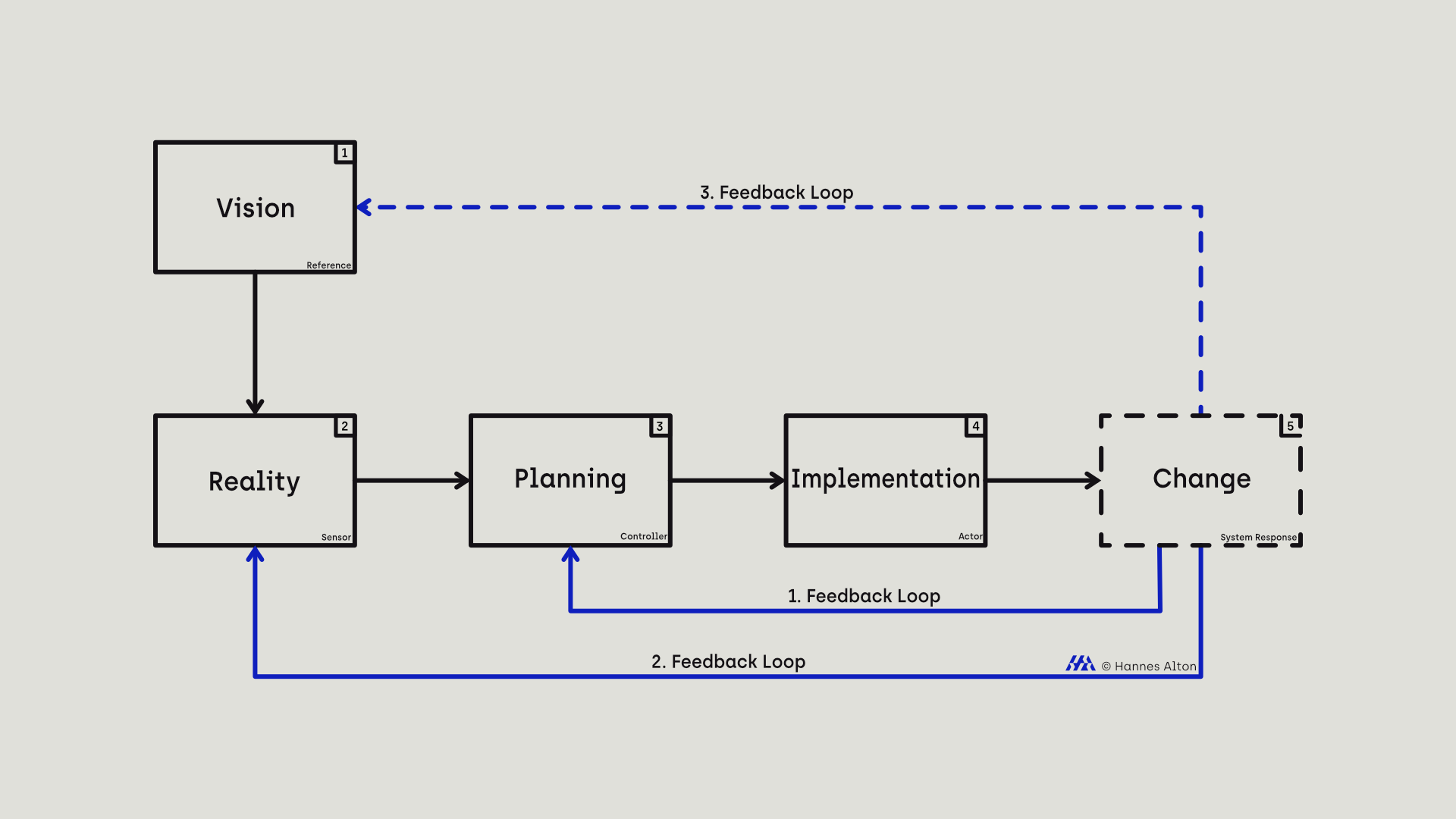Puzzle Transformation: An Operating System for Change
What leads to the failure of change projects, even after meticulous planning? Is it the resistance of employees, or is it rooted in the very way we conceptualize change initiatives?
We humans are masters of change, but in a corporate context, things often look different. Projects fail for a variety of reasons that have little or nothing to do with people.
The last article was about the future fitness of organizations and the role organizational design plays in this. One crucial aspect was not addressed. Companies must continuously adapt to changes in their environment to remain relevant in the long term.
While change used to be the exception, it is now the new normal due to geopolitical, social, and economic upheavals.
Change models provide guidance for change processes. Due to their division into phases, classic change models no longer meet the requirements placed on them.
That is why I am presenting an alternative, adaptive model here, which I call Puzzle Transformation. It is based on adaptability, decentralization, and continuous learning. The following article shows how
Puzzle Transformation works in practice.
Why do we need change models?
We don't need them at all, because they primarily have a psychological function.
Change is associated with unpredictability. This applies to both companies and their employees. Our natural curiosity wants to understand what is going on, and when this knowledge is lacking, it leads to stress and uncertainty.
Change models are a strategy for dealing with this uncertainty. They illustrate what is happening and thus make the process tangible. Their logical structure in phases conveys a sense of security and orientation.
Classic change models depict change as a linear process that does not exist in reality.
Classic change models: An illusion of control
What can we humans control directly? If we are honest, it is very little.
The same applies to change processes. People pursue their strategies for dealing with change and need different amounts of time to do so. This aspect is often overlooked in classic change models.
Whether it's:
- Lewin’s change management model,
- Kübler Ross’ change curve oder
- Kotter’s 8-step process for leading change on which many change initiatives are based.
These models convey the impression that:
- Change is linear and occurs in phases.
- Change is imposed from above and employees are primarily recipients of change.
- Projects must be centrally planned and rigorously implemented.
- Change is an exceptional situation that is completed at a specific point in time.
- Only a clear, long-term plan will bring the desired success, without room for reflection or innovation.
As you read through this, you will have noticed that these assumptions have little to do with reality.
Change is dynamic
Change is not an exceptional situation, but the new normal.
Future-fit organizations have recognized this and have begun to view adaptability as a core competency and to build it up systematically .
Because: Change is dynamic and continuous.
We need to begin rethinking our approach to change:
- Change takes place simultaneously on several levels, both at the organizational and human, individual level.
- Co-creation to actively involve employees in the process, making them co-architects.
- Implementation of micro change initiatives that interact to form the big picture.
- Continuous learning and adaptation to be able to respond flexibly to changing requirements.
- Decentralization of responsibility to enable quick and appropriate responses.
- Integration of neuroscientific findings to understand better human reactions to change.
- Creating space for reflection to give people the opportunity to exchange ideas.
- Creating space for innovation to overcome challenges creatively.
- Applying systems thinking to better understand interactions and complexity within the organization.
A fundamental rethinking of how change works is necessary for dealing with change constructively.
A single change model cannot cover all requirements. I am aware of this.
Nevertheless, it is helpful for companies to work with a model that meets the changed requirements.
Puzzle Transformation: An adaptive change model for complex systems
I call the change model I have designed Puzzle Transformation.
Puzzle Transformation is applicable at all organizational levels and relies on the principles of John Boyd's OODA loop (Observe, Orient, Decide, Act).
The model consists of a master control loop and one or more sub-control loops. The master control loop has a strategic function and controls the entire process. The sub-control loops are where the operational implementation and detailed project planning take place.
In the first step – determination – the level and unit for change iare identified. This can occur in either top-down or bottom-up manner.

The five phases of Puzzle Transformation
Both control loops consist of the following five phases:
- Vision - developing a picture of the future: Developing a clear picture of the future that serves as a point of reference.
- Reality - understanding the current situation: Understanding where the organization currently stands. A creative tension arises between the vision (goal) and reality.
- Planning - deriving measures: Measures are derived to achieve the target state and overcome the creative tension.
This step represents the interface between the master and sub-control loops.
4. Implementation - implement measures: Measures are implemented step by step in the form of projects so as not to overwhelm the system. It is comparable to putting together pieces of a puzzle to form the complete picture.
That is why I call this model the puzzle transformation, which is more like an operating system for change.
5. Change - response of the system: Observe whether the measures have brought about the desired change. Change affects the vision (the target image), which closes the circle and starts again.
It should be noted that, from a systemic perspective changes can happen either immediately (immediate success), with a delay (delayed success), or not at all (failure).
In the event of delays, it is advisable for companies not to switch to panic mode immediately , but to observe the system.
Learning and adaptation through feedback loops
Feedback loops ensure that the right information flows to the right places in the right amounts.
Three are “built in” to Puzzle Transformation. Feedback from the teams (sub-control loops) flows back into the overall picture, making change an iterative, adaptable process. The master control loop (strategic) is responsible for steering the process. The sub-control loops (operational) are accountable for working out projects in detail and implementing them.
The feedback loops connect both control loops and enable them to act as a single entity.
Conclusion and outlook
Change has become the new normal. Companies recognize this and are building adaptability as a core competency and embedding it in their corporate DNA. Puzzle Transformation offers an operating system for this purpose that is adaptable, capable of learning, and able to handle complexity thanks to its integrated feedback loops.
Would you like to explore the topics presented here in more depth for your organization?
I would be happy to accompany you on your journey. Arrange an appointment to discuss your questions and concerns.
Curious about
how puzzle transformation works in practice? You'll find the answer to this question in the following blog series.




